Design a Bird Challenge
Give students of all ages a fun challenge: to draw an imaginary or real habitat for which a classmate designs a well-adapted bird. Keep reading to learn how and to see the habitats our students designed.
Background
All living things, including birds, rely on their habitat—a place that provides food, water, cover, and space. Cover includes nesting areas, places to sleep or rest, and places to hide or escape. Space refers to having enough of the right habitat to allow plants and animals to survive. If a place does not provide adequate food, water, and cover, a plant or animal cannot live there.
Adaptations are characteristics that allow a plant or animal to survive and reproduce. Animals have both physical and behavioral adaptations.
In the following activity, students explore the relationship between an animal’s adaptations and their habitat by brainstorming how a bird might look and act given a habitat with unique or challenging features.
Activity Instructions
1. Give each student a blank piece of paper, with a large circle drawn in the center of the paper. Challenge students to first design a unique or challenging habitat of their choosing that a bird might live in outside the circle. It does not have to be a real habitat, but it should contain food, water, cover, and space. Give the students 5–10 minutes to draw a habitat, using labels or captions to enhance their drawing. See the examples below for inspiration:
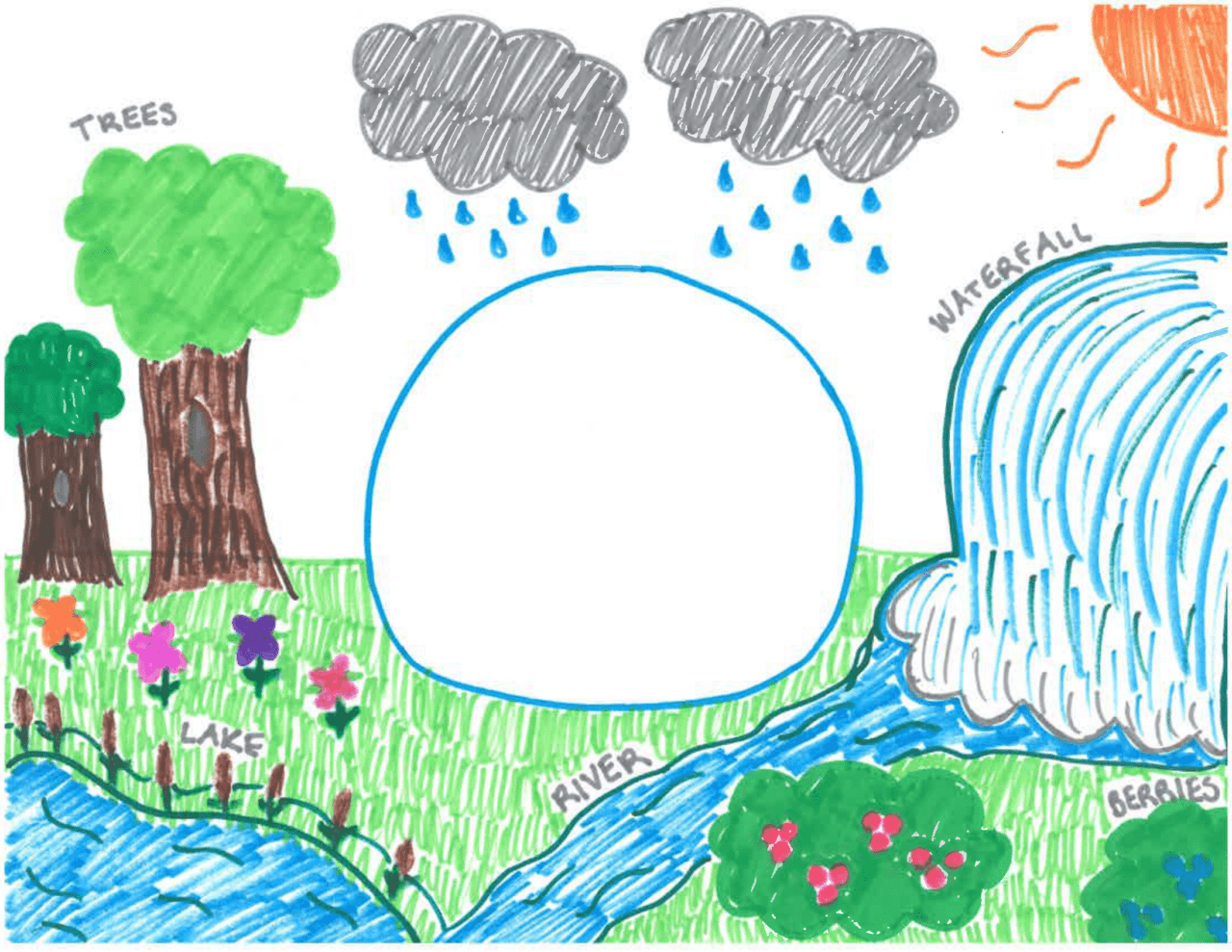
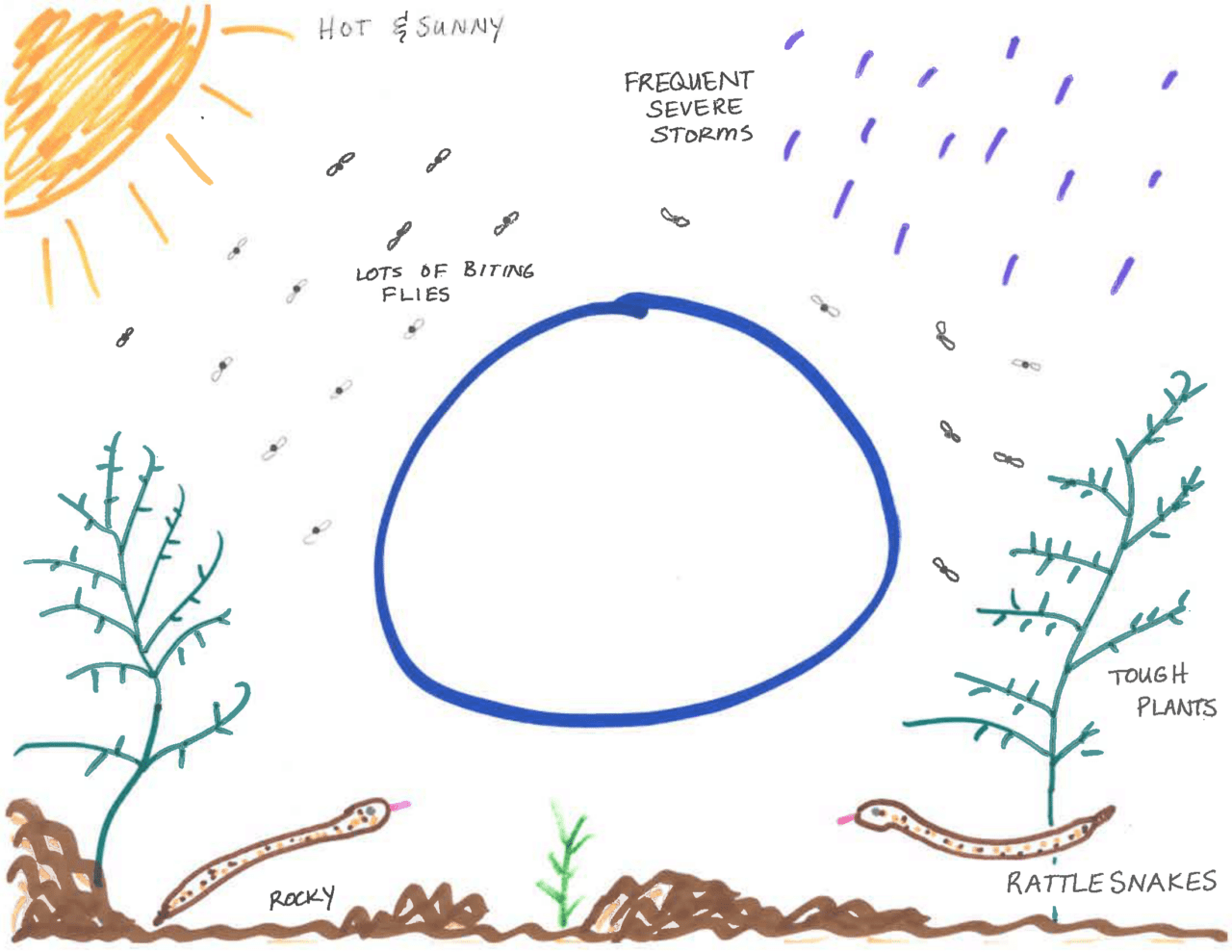
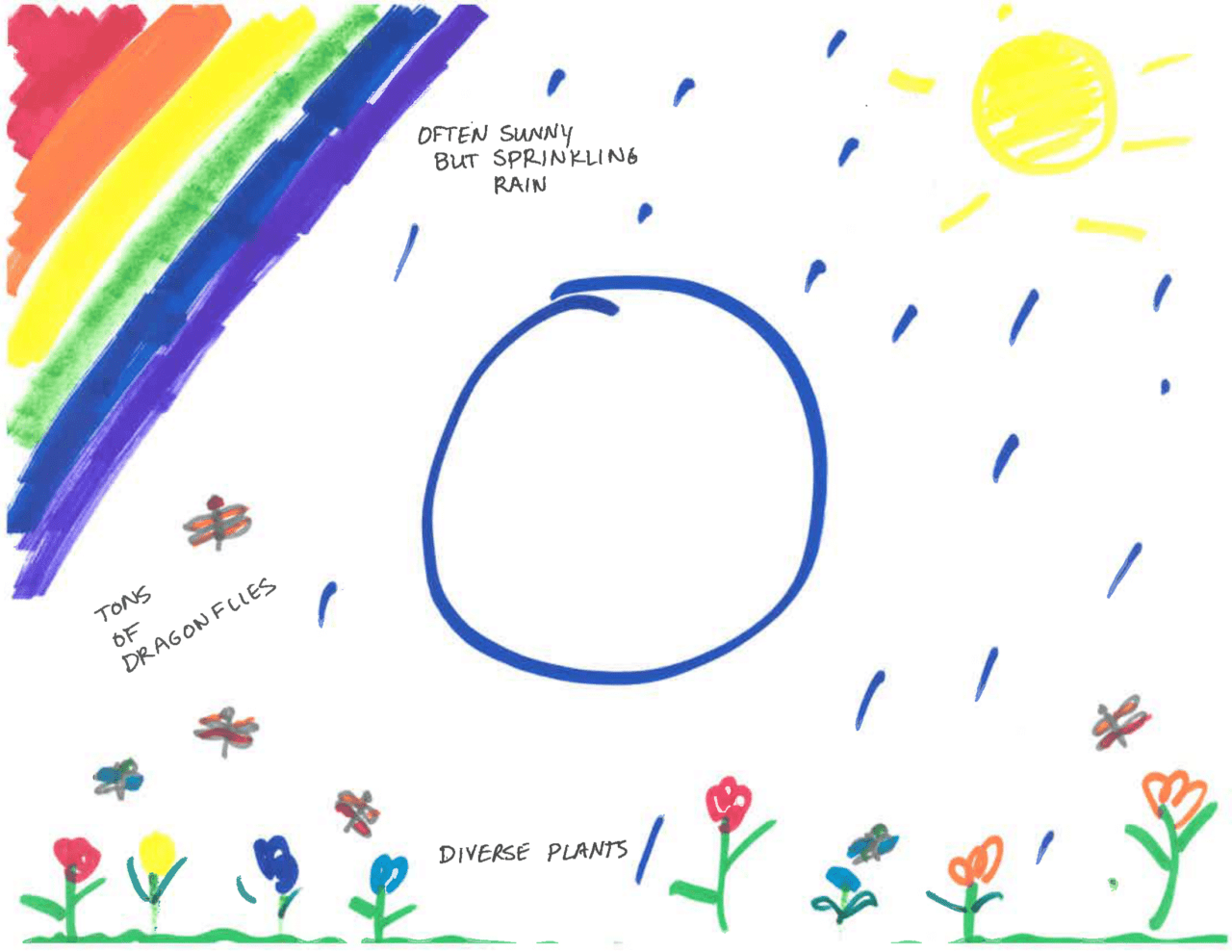
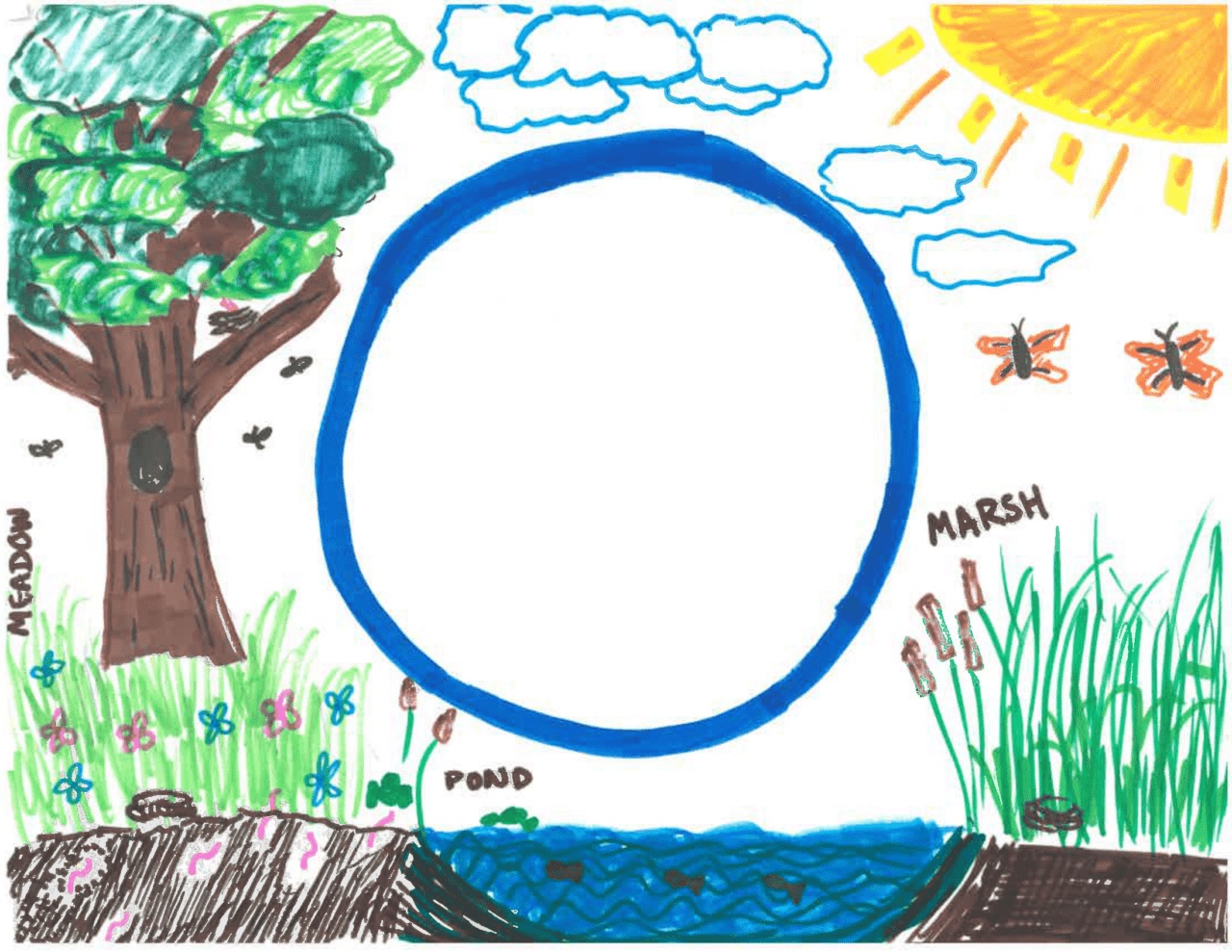
2. Next, collect the completed papers and randomly redistribute one to another student. Now the students must look at the habitat they’ve been given and design a new bird species that is adapted to that habitat. Encourage students will need to consider what the bird will eat, where it can get water, what it will use for shelter, and how it will defend itself from potential predators. They can be as creative as they like! Once the students have designed their birds, invite each student to present to a partner, a small group, or a whole class and justify why their bird is well adapted for the habitat they were given (see example below).
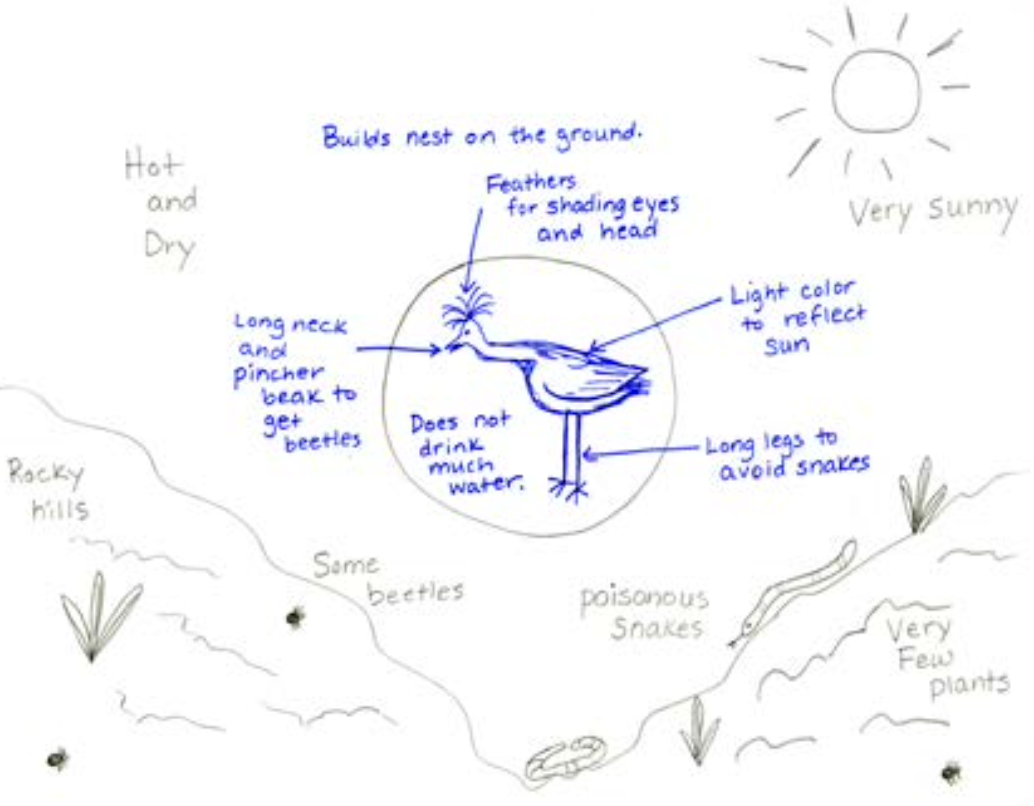
Get creative!
When designing a habitat and bird, encourage students to think outside of the box. The more creative the habitat, the more creative the bird adaptations will become.
If you would like to take the activity a step further, you can also have students take the perspective of the bird they have created. Have students write a first-person diary entry that describes how the bird finds food and water, how it avoids any predators, and where it sleeps.
Enjoy this activity? Check out the eBird Explorers Curriculum Suite for more! This Design a Bird Challenge activity is adapted from an activity in the 3rd-5th Grade: Discover Schoolyard Birds kit.